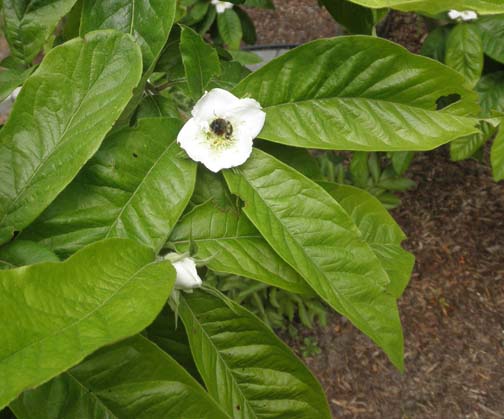If you are like me, you most likely are scratching your noggin, asking, “what the heck is a medlar?” Well, I asked that very same question many times years ago. Often while looking at paintings in museums or browsing through art books, I noticed an odd looking nut-like fruity exotic thing in compositions of Dutch still lifes, mostly from the 17th century. About five years ago, in a book I don’t really recall, I found a description of the objects in one such painting which listed a, heretofore unknown to me, medlar. Ah ha!
As you know, with the age of the Internet, just about anything is searchable nowadays. Of course, I found lots of information about this unusual fruit and suddenly thought, “if it grows in Holland, maybe it will grow in Oregon.” After a minimum of investigation, One Green World, a nursery in Washington State, shipped a starter tree in the spring of 2008 for something like 25 bucks.
This lovely tree is now flourishing in my back yard and will grow to a modest height of 12 feet. The first year it bore just a few fruits but this year, now that the tree is more mature it was loaded. The leaves are large and showy, and the blossoms are pure white somewhat larger than a strawberry blossom.
The fruit is considered a delicacy and has been enjoyed since Medieval times. The trick is to pick it before the squirrels do, let it soften, and eat the custard-like goodness right from the shell.
They are quite fun to paint and last a long time before they begin to shrivel or wrinkle. Here I have used it in my latest painting, The Journey of the Medlar. Mystery solved.



